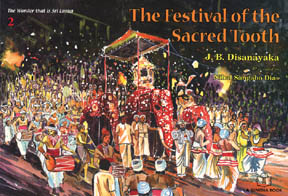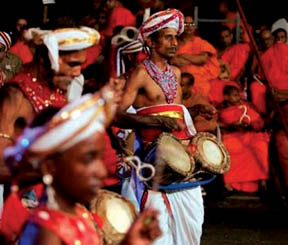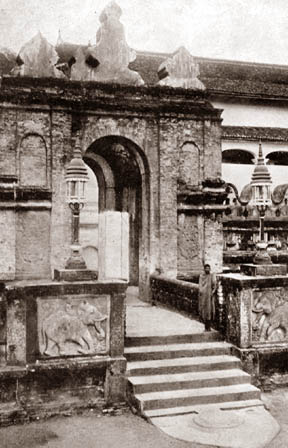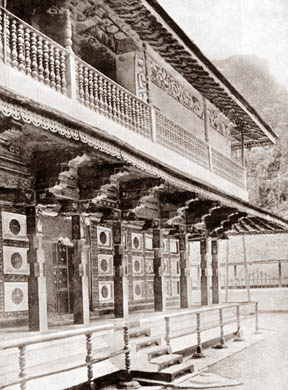|
observer |
|
|
|
|
|
OTHER LINKS |

|

|

|
|
|
|
The Relic, which was moved to each new kingdom, was finally brought to Kandy by King Wimaladharmasuriya I. Although the present Temple of the Tooth is attributed to him, he had only built a three-storey shrine. It had been rebuilt with two storeys by his son, Narendrasinha. The Temple that we see in Kandy now was built by the Nayakkar king, Kirthi Sri Rajasinha (1747-1781), who constructed it on the same ground plan as the previous one.
|
|
It was also this king who brought about a Buddhist revival in the Kandyan Kingdom and took steps to transform the Perahera into a mainly Buddhist festival, as the one we see today. By then, due to the Nayakkar influence it had taken strong Hindu characteristics.
The Perahera today comprises five components: the Dalada Maligawa Perahera, followed by the peraheras of the Natha, Vishnu, Kataragama and Pattini devales which are situated around the Maligawa.
On the last day, the glittering Perahera is led by whip crackers, who announce the approach of the procession. The Peramunerala who used to carry the mandate from the King giving permission to hold the Perahera, comes on the first elephant. Next, come the drummers followed by the Gajanayaka Nilame on elephant-back. The Kariyakorale walks next, in the Perahera.
After him, comes the most eagerly awaited moment - the beautifully decorated Maligawa Tusker carrying the golden casket containing the Sacred Relics. (The actual relics are not carried in the Perahera now. Instead, a duplicate casket carries other relics.) The Tusker, accompanied by two other elephants, is followed by dancers and drummers, and the Diyawadana Nilame walks at the end of this group. The four devale peraheras follow the main perahera.
Booklet on Esala Perahera
Prof. J.B. Disanayaka, Professor Emeritus of the University of Colombo has published a booklet titled 'The Festival of the Sacred Tooth', which is about the annual Dalada Perahera in Kandy.
The second volume in a series entitled 'The Wonder that is Sri Lanka', the book aims to explain the cultural meaning of the festival. Some of the questions it seeks to answer are:

Why is this festival held in the month of Esala?
How did a tooth of the Buddha become a sacred relic with political power?
Why is a religious relic housed in a palace (maligawa)?
Why has the Dalada Maligawa been declared a high security zone?
Who brought the peraheras of the four devales and the Dalada Perahera into one?
Why is the ritual that ends the Perahera known as the 'water-cutting' ceremony? How can one 'cut' water?
The colourful illustrations of the booklet have been done by Nihal Sangabo Dias, based on murals found at the Maligawa itself. It has been published by Sumitha Publishers and printed by Tharanjee Prints.
The series of booklets introduces some of the cultural festivals and places of cultural interest that makes Sri Lanka unique. The first in the series 'The Festival of the Sun-god' explained the significance of the New Year festival in April.












